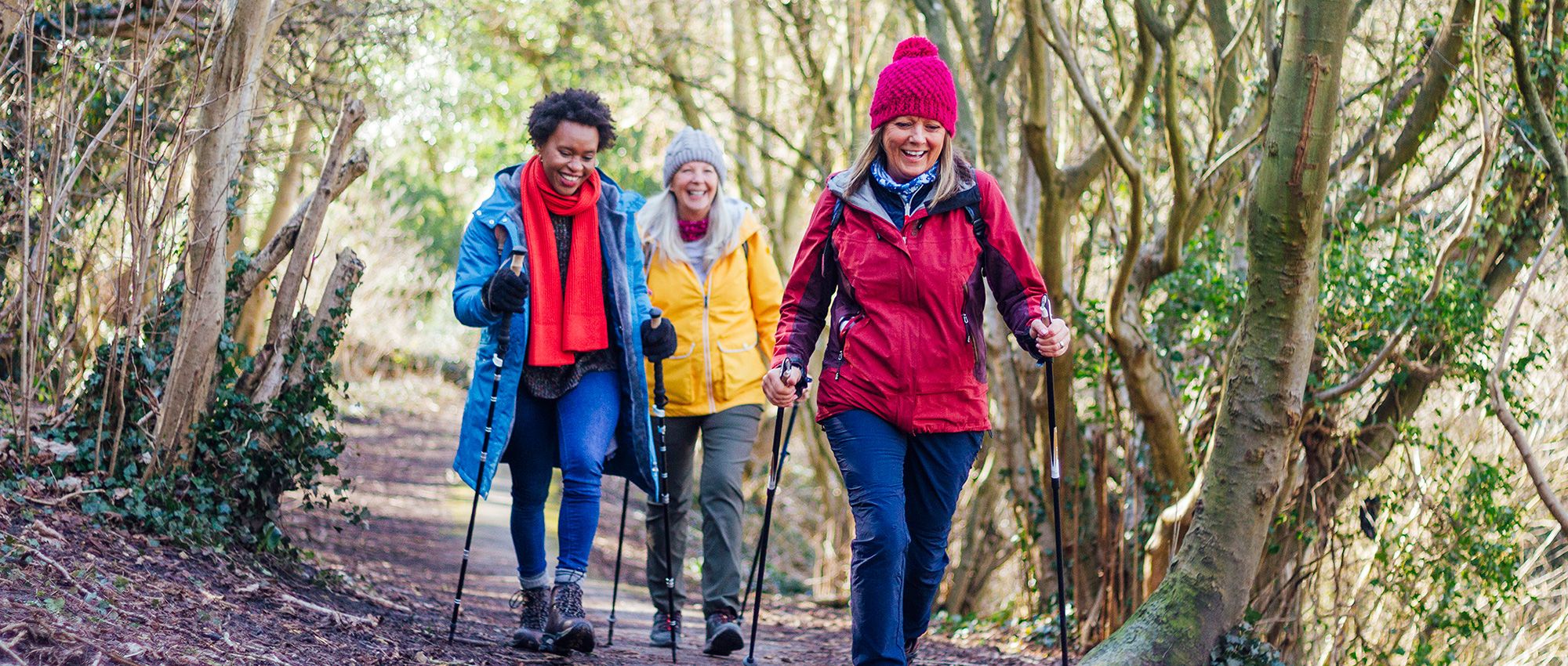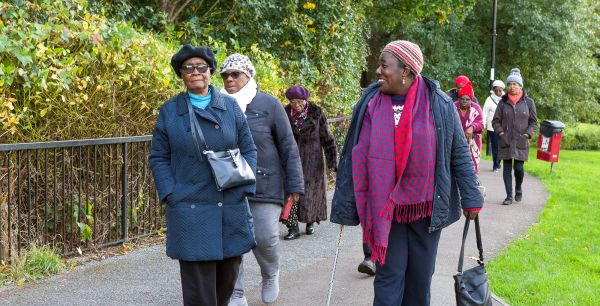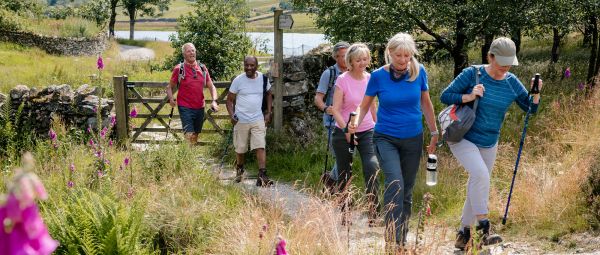Joint care for walkers
Jen Benson, who has a BSc (Hons) in podiatry and a master's in sport and exercise medicine, looks at the best ways to care for our joints and avoid injuries when walking

Common joint problems
Because of their complexity and the effects of repetitive stresses over decades of use,joints may become stiff, restricted and even painful as we age. For most people over the age of about 45, noticing changes in the way our joints move or feel is a normal part of getting older, though keeping active has been shown to slow this process. Other factors, such as injury and disease, can also cause joints to hurt or stop working as they should.
Arthritis
Arthritis means joint inflammation. Our joints can become inflamed for many reasons, including disease, injury and trauma Osteoarthritis (OA) is the most common type, prompting some 3 million GP visits each year in the UK.
Once thought to be a condition that only affected the cartilage in our joints, OA is now understood to affect the whole joint. Over time, repetitive loading, microdamage and repair processes within the joint alter its structure, leading to a loss of cartilage, remodelling of bone at the joint margins, and inflammation of the synovial membrane that lines the joint capsule. These changes cause the stiffness, swelling and pain commonly reported by people with OA knees are most often affected, followed by the hips and particularly in women, the hands and wrists.
Development of OA is strongly associated with ageing, it occurs in about 50% of over-65s. According to Versus Arthritis, about a third of people in the UK aged 45 and over have sought treatment for the condition. Being a woman, overweight, genetically predisposed or having previous joint injury all increase the risk. For those already affected, muscle weakness and poor joint alignment may speed up its progression, a great reason to do regular resistance training.
Other forms of arthritis
While OA is by far the most common form of arthritis, other types can also cause joint pain. Gout is an inflammatory arthritis that usually manifests as a sudden onset of pain, swelling and redness in a single joint, most often the big toe. More common in men than women, it's the result of high levels of uric acid in the bloodstream, leading to a build-up of urate crystals in joints. See your GP if you think you have gout. The quicker it's treated, the lower the risk oflong-termjoint damage.
Rheumatoid arthritis is an autoimmune disease that causes pain, swelling and eventual deformity in joints, most often in hands, wrists and feet. It's more common in women than men, and can run in families. Again, if you notice symptoms, see your GP.
Strains and sprains
Joints can also be damaged by tripping, falling or twisting awkwardly, and traumatic knee and ankle injuries are common in sports such as skiing and running. Typically, these injuries affect tendons and ligaments in and around the joints, for example, the cruciate ligaments in the knee and the lateral ligaments of the ankle, along with the articular cartilage and menisci. While many injuries heal well with time and rehabilitation, such as movement and strength-training exercises, they may also increase the risk of longer-term problems by altering the mechanics of the joint.
Looking after your joints
Regular walkers are well aware of the far-reaching benefits that being active can have for our minds and bodies. And as with all aspects of wellbeing, having a good diet, getting enough sleep, not smoking, reducing our alcohol intake and maintaining a healthy body composition will all help keep the joints healthy. Countless studies have shown regular exercise is beneficial for our joint health, including for people with OA. As well as walking, you should work strength and mobility exercises into your daily routine.
Maintaining mobility
It's easy to fall into the habit of using joints in the same way, day in, day out. As a result, joints that have evolved to move in lots of different ways can become restricted and painful. Mobility exercises keep them supple and can be done without added resistance.
Many people stretch as a way of increasing mobility, but static stretching has little or no long-term effect on mobility or injury risk. Dynamic mobility exercises, such as squats, lunges and arm circles are far more effective.
Strength training
Strong muscles are essential for supporting and protecting joints, and muscle weakness is common in people with OA. The rate of muscle repair and regeneration slows as we age, so muscle strength becomes harder to gain and maintain. But with regular, appropriate strength training, it's possible to build and retain muscle mass at any age. Strength training also improves control and muscle recruitment,joint range of motion, and even aerobic fitness.
Strength training can range from simple squats, lunges and step-ups/step-downs at home to a weights session in a gym. If you haven't done strength training before, or you have joint problems, build up gradually. A higher number of repetitions with lower weights can have similar benefits to using heavier weights, with a lower risk of injury. If you have doubts about starting, get advice from a physiotherapist, strength and conditioning coach or personal trainer.
Footwear and equipment
When rambling, make sure your footwear fits well, isn't too heavy, and is in good condition. Excessive wear on the sole of a walking boot can affect the amount and direction of the loading in your ankles, knees, hips and spine. Bear in mind that insoles and orthotics don't only affect your feet, but also the joints further up.
Knee braces
There's some evidence that wearing a soft knee brace can reduce pain and improve function in people with OA
Walking poles
Used correctly, walking poles help reduce the forces around specific joints, such as the ankles, hips and knees, by involving the upper body and spreading the load across a larger number of joints. This can be particularly helpful when walking on terrain with big step-ups or step-downs, which place lots of strain on the knees. They also offer extra points of contact with the ground, which may help improve balance and stability, reducing the likelihood of trips or falls. However, be aware that they reduce your ability to use your hands for balance, and may be a hazard to you and others if you do take a tumble.

Walking and arthritis
Walking is a gentle way for people living with arthritis to get more active. Our health walks make it easy to get walking safely and are free to join.

7 of the most beautiful winter walks in England
Wrap up warm and wander among the prettiest landscapes sparkling with frost and bustling with birds and other wildlife.

How walking can boost your health
Discover how walking can reward you with huge health benefits including a boost in mood. And it’s fun!